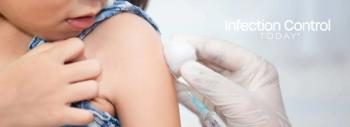
Processing a Device That Lacks an IFU
Q: On occasion, I will be asked to process a device which does not have instructions for use. Sometimes, the item is not a medical device (e.g., zipper). I am told I must process the device because the surgeon requires it for a case. I usually process the device. I have just learned this is not the correct practice. How do I handle this?
By Nancy Chobin, RN, AAS, ACSP, CSPM
This new column, SPD Dialogue, will respond to questions asked by sterile processing professionals. We hope you find this dialogue helpful and informative.
Q: On occasion, I will be asked to process a device which does not have instructions for use. Sometimes, the item is not a medical device (e.g., zipper). I am told I must process the device because the surgeon requires it for a case. I usually process the device. I have just learned this is not the correct practice. How do I handle this?
A: The Food and Drug Administration (FDA) has strict guidelines on clearances for devices used in healthcare. When a company wishes to bring a new product to market, they must submit a 510K to the FDA. According to the FDA, “A 510(K) is a premarket submission made to FDA to demonstrate that the device to be marketed is at least as safe and effective, that is, substantially equivalent, to a legally marketed device (21 CFR §807.92(a)(3)) that is not subject to premarket approval. Each person (company) who wants to market in the U.S., a Class I, II, and III device intended for human use, for which a Premarket Approval (PMA) is not required, must submit a 510(k) to FDA unless the device is exempt from 510(k) requirements of the Federal Food, Drug, and Cosmetic Act.”
Before marketing a device, each submitter must receive an order, in the form of a letter, from the FDA which finds the device to be substantially equivalent (SE) and states that the device can be marketed in the U.S. This order "clears" the device for commercial distribution. A company (person) is not permitted to provide market or sell the device until clearance is obtained from the FDA.
That being said, items such as empty IV bags, pencils, screwdrivers (from hardware stores) and the like are not developed for medical use and as such have not been submitted to the FDA for clearances. The clearance process ensures the product is safe for the intended use. For example, would you sterilize the pencil below? Obviously, this one was sterilized. Look at the graphite that was extracted from the tip of the pencil. Did the paint on the pencil contain lead or other toxins? And, how do we sterilize wood?
You should have a strong policy, supported by Risk Management and Infection Prevention that require that any devices processed/sterilized in house have been cleared by the FDA for use as a medical device. The policy should be explained to the surgeons and perioperative staff members. Processing any device which is not cleared by the FDA is a legal liability for the facility and can put the patient’s safety at risk as well.
It is important to have such a process in place to prevent “crisis” situations which can impact on patient care. It is recommended that the Sterile Processing and Perioperative Services departments work collaboratively to achieve this goal.
Nancy Chobin, RN, AAS, ACSP, CSPM, is vice president of sterile processing services at Barnabas Health in West Orange, N.J.
Newsletter
Stay prepared and protected with Infection Control Today's newsletter, delivering essential updates, best practices, and expert insights for infection preventionists.






